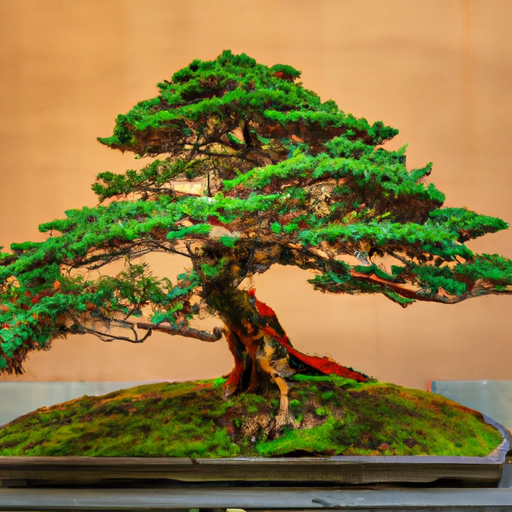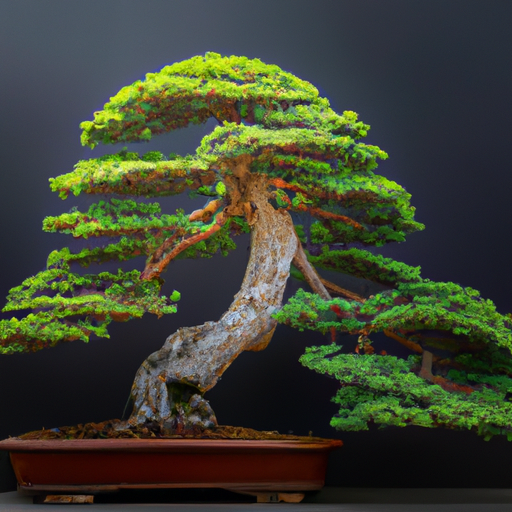In this article, you will learn about the fascinating world of Japanese gardens and how their tools contribute to the overall aesthetic. We will explore the traditional tools used by gardeners in Japan, such as the bamboo rake and the pruning shears, and how they are essential in creating the serene and harmonious atmosphere that Japanese gardens are known for. By understanding the significance and craftsmanship behind these tools, you will gain a deeper appreciation for the artistry and attention to detail that goes into designing and maintaining these beautiful spaces.
Japanese gardens are revered for their simple yet sophisticated beauty, and their tools play a crucial role in achieving this aesthetic. The bamboo rake, for example, is used to create patterns and textures in the gravel or sand, adding depth and visual interest to the garden. The pruning shears, on the other hand, are used to carefully shape and trim the plants, allowing them to grow in a controlled and harmonious way. By learning about the different tools used in Japanese gardens, you will not only gain insight into their purpose and function, but also develop a greater understanding and appreciation for the art of creating and maintaining these peaceful and tranquil spaces. Japanese gardens have a long and rich history dating back centuries. These gardens are not only known for their serene beauty, but also for the meticulous design and attention to detail that goes into creating them. One of the key factors that contribute to the aesthetics of Japanese gardens is the use of traditional tools, which have been passed down through generations. In this article, we will explore the history of Japanese gardens, the different types of Japanese gardens, and how the tools used in these gardens play a vital role in their design.
Origins of Japanese Gardens
The origins of Japanese gardens can be traced back to the Asuka period (538-710) when Buddhist monks from China introduced the concept of creating natural landscapes as a way of meditating and seeking tranquility. These early gardens often featured ponds, rocks, and bridges, elements that would become integral to Japanese garden design. As Japanese society evolved, so did the gardens, incorporating elements from different artistic and cultural movements.
Development of Japanese Garden Tools
The development of Japanese garden tools can be attributed to the increasing sophistication of garden designs. As the gardens became more complex, specialized tools were needed to maintain and create them. Traditional tools used in Japanese gardens include pruning shears, bamboo rakes, and watering cans, to name a few. These tools were crafted with precision and attention to detail, reflecting the same principles applied to the gardens themselves.
Types of Japanese Gardens
Zen Gardens
Zen gardens, also known as dry gardens or karesansui, are perhaps the most famous type of Japanese garden. These gardens originated in Zen Buddhist temples and were designed to facilitate meditation and contemplation. Zen gardens typically consist of carefully arranged rocks, gravel, and moss, representing various natural elements such as mountains, rivers, and islands.
Tea Gardens
Tea gardens, also known as roji, are designed to be both aesthetically pleasing and functional. These gardens were created with the tea ceremony in mind, serving as a tranquil space where guests could relax and appreciate nature. Tea gardens often feature stone paths, stepping stones, and teahouses, creating a peaceful atmosphere conducive to the tea ceremony.
Stroll Gardens
Stroll gardens, or kaiyushiki teien, are designed to be experienced by walking through them. These gardens offer a carefully curated journey, with different perspectives and views at every turn. Stroll gardens often feature ponds, bridges, and well-placed plants and trees, creating a harmonious and serene atmosphere.
Key Elements in Japanese Garden Design
Minimalism and Simplicity
One of the key elements in Japanese garden design is minimalism and simplicity. Japanese gardens often favor a less-is-more approach, with a focus on creating beauty through the use of a few carefully chosen elements. This simplicity not only creates a sense of tranquility but also allows the viewer to appreciate and contemplate each component of the garden.
Balance and Harmony
Balance and harmony are also important principles in Japanese garden design. Japanese gardens aim to create a sense of equilibrium, both visually and emotionally. This balance is achieved through the careful placement of elements such as rocks, plants, and water features. The use of symmetry and asymmetry plays a crucial role in creating a harmonious and visually appealing space.
Natural Materials
Japanese gardens emphasize the use of natural materials, such as rocks, gravel, wood, and water. These materials are chosen for their ability to blend seamlessly with the natural surroundings and create a sense of harmony. Traditional tools used in Japanese gardens are often made from these same materials, further reinforcing the connection between the tools and the garden they help create.

Introduction to Japanese Garden Tools
Traditional Tools Used in Japanese Gardens
Traditional tools used in Japanese gardens are crafted with a deep understanding of the art and principles of garden design. Pruning shears, also known as niwabasami, are essential for shaping and maintaining the plants in the garden. These shears are designed to cut through branches cleanly and precisely, allowing for intricate pruning and shaping.
Evolution of Japanese Garden Tools
Japanese garden tools have evolved over time, adapting to changing techniques and styles. The focus on precision and attention to detail remains constant, but advancements in technology have allowed for more efficient and ergonomic designs. Today, modern variations of traditional tools, such as electric hedge trimmers and lightweight rakes, are available, offering convenience without compromising on the aesthetics and principles of Japanese garden design.
Essential Japanese Garden Tools
Pruning Shears
Pruning shears are perhaps the most important tool in a Japanese garden. These shears are used for shaping and maintaining the plants in the garden, allowing the gardener to create intricate and precise designs. The blades of pruning shears are typically curved to provide better control and maneuverability.
Bamboo Rakes
Bamboo rakes, also known as hake, are used for raking and leveling the gravel in Zen gardens. These rakes are made from bamboo teeth and a wooden handle, providing a lightweight and flexible tool that is perfect for creating intricate patterns in the gravel.
Watering Cans
Watering cans, or mizutsukibishaku, are used to water the plants in the garden. These watering cans are designed to provide a gentle and controlled flow of water, allowing the gardener to water the plants without causing damage. Watering cans are often made from copper, which not only adds to the aesthetics but also helps prevent rusting.

Role of Tools in Japanese Garden Design
Precision and Attention to Detail
Japanese garden tools play a crucial role in achieving the precision and attention to detail that is characteristic of Japanese gardens. The intricate designs and arrangements in the garden require tools that can handle the delicate pruning and shaping of plants, as well as the careful raking and arrangement of gravel.
Creating Distinctive Landscapes
Japanese garden tools are essential in creating distinctive landscapes that reflect the principles of Japanese garden design. The careful pruning, shaping, and arrangement of plants and elements in the garden can only be achieved with the use of specialized tools. These tools allow the gardener to create unique and beautiful landscapes that are both visually appealing and harmonious.
Techniques for Using Japanese Garden Tools
Pruning and Trimming Techniques
Pruning and trimming techniques are crucial in maintaining the aesthetic appeal of a Japanese garden. Proper pruning allows for the shaping and maintenance of plants, promoting healthy growth and ensuring that the garden remains balanced and visually pleasing. Techniques such as topiary and cloud pruning are commonly used in Japanese garden design.
Raking and Gravel Arrangement
Raking and gravel arrangement techniques are particularly important in Zen gardens. These gardens often feature raked patterns in the gravel, symbolizing the flow of water or the ripples in a pond. Proper raking techniques, such as using a pulling motion and creating clean lines, are essential in achieving the desired patterns and creating a sense of tranquility.
Maintaining Japanese Garden Tools
Cleaning and Care for Longevity
To ensure the longevity of Japanese garden tools, proper cleaning and care are essential. After each use, tools should be cleaned and dried thoroughly to prevent rusting. Periodic maintenance, such as oiling and sharpening, should also be done to keep the tools in optimal condition.
Traditional Methods for Tool Preservation
Traditional methods for tool preservation have been passed down through generations. For example, tools made from metal are often coated in oil or wrapped in cloth to prevent rusting. Wooden handles are regularly treated with linseed oil or beeswax to keep them in good condition. These traditional preservation methods not only protect the tools but also serve to honor the craftsmanship and legacy of Japanese garden tools.
Cultural Symbolism of Japanese Garden Tools
Symbolism of Bamboo in Japanese Culture
Bamboo holds great significance in Japanese culture and is often used in garden tools. Bamboo is a symbol of strength and resilience, as it can bend without breaking. The use of bamboo in tools not only adds to their aesthetics but also serves as a reminder of the qualities that are valued in Japanese gardens and culture.
Significance of Stone Lanterns
Stone lanterns, or ishidoro, are commonly found in Japanese gardens and serve both a practical and symbolic purpose. These lanterns provide light and guide visitors through the garden, but they also symbolize enlightenment and spiritual illumination. Stone lanterns are often intricately carved, showcasing the craftsmanship and attention to detail that is characteristic of Japanese garden tools.
Conclusion
Appreciating the aesthetics of Japanese gardens goes beyond simply admiring the landscape. The tools used in these gardens play an integral role in the design and maintenance process, reflecting the principles of minimalism, balance, and harmony. By understanding the history, types, and key elements of Japanese gardens, as well as the techniques and symbolism behind the tools used, one can truly appreciate the artistry and legacy of Japanese garden design. Through their precision and attention to detail, Japanese garden tools help create and maintain landscapes that are not only beautiful but also deeply meaningful. By preserving the legacy of these tools and continuing to use them in the creation of Japanese gardens, we ensure that the aesthetics and principles of this ancient art form are passed on for future generations to enjoy.








